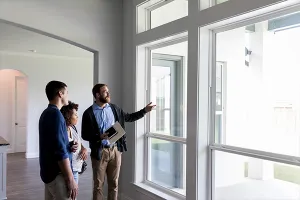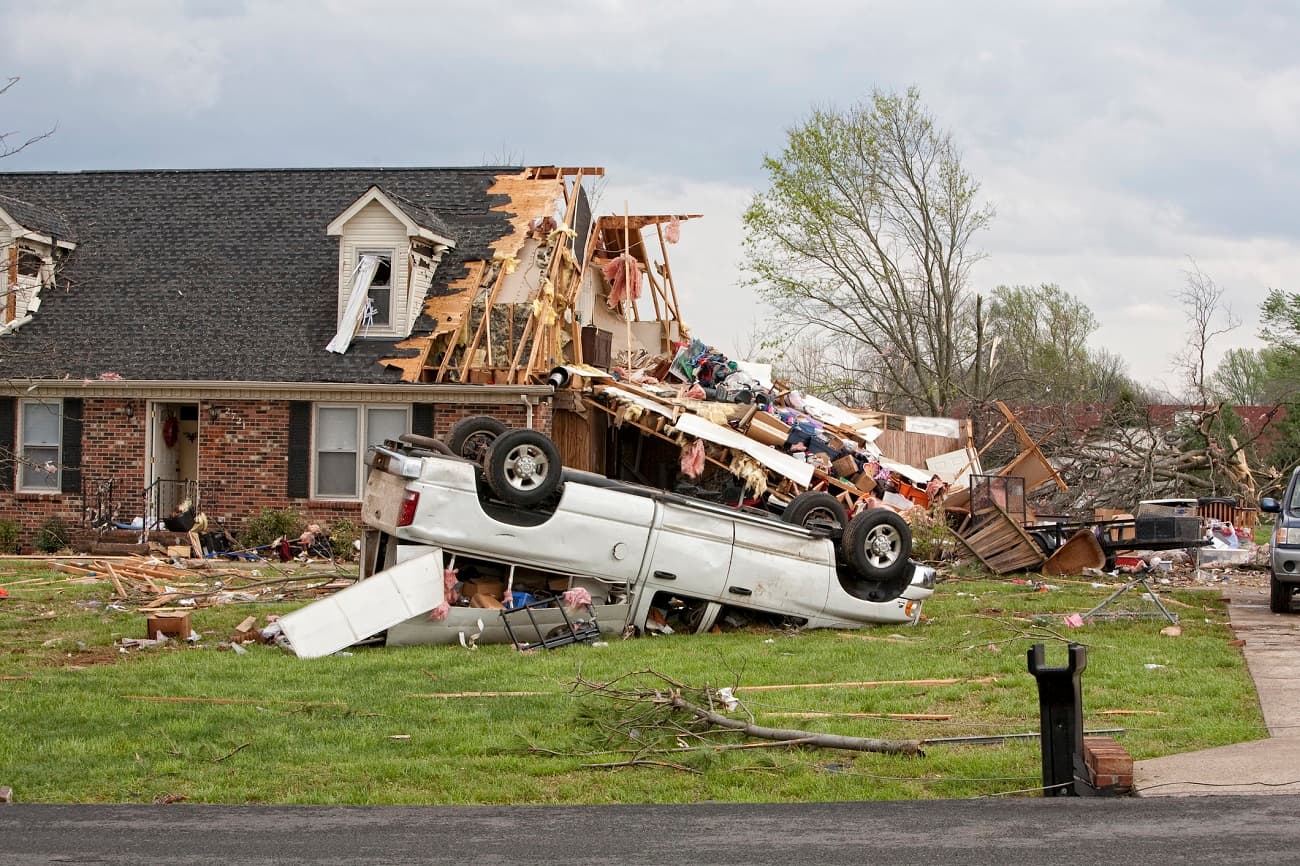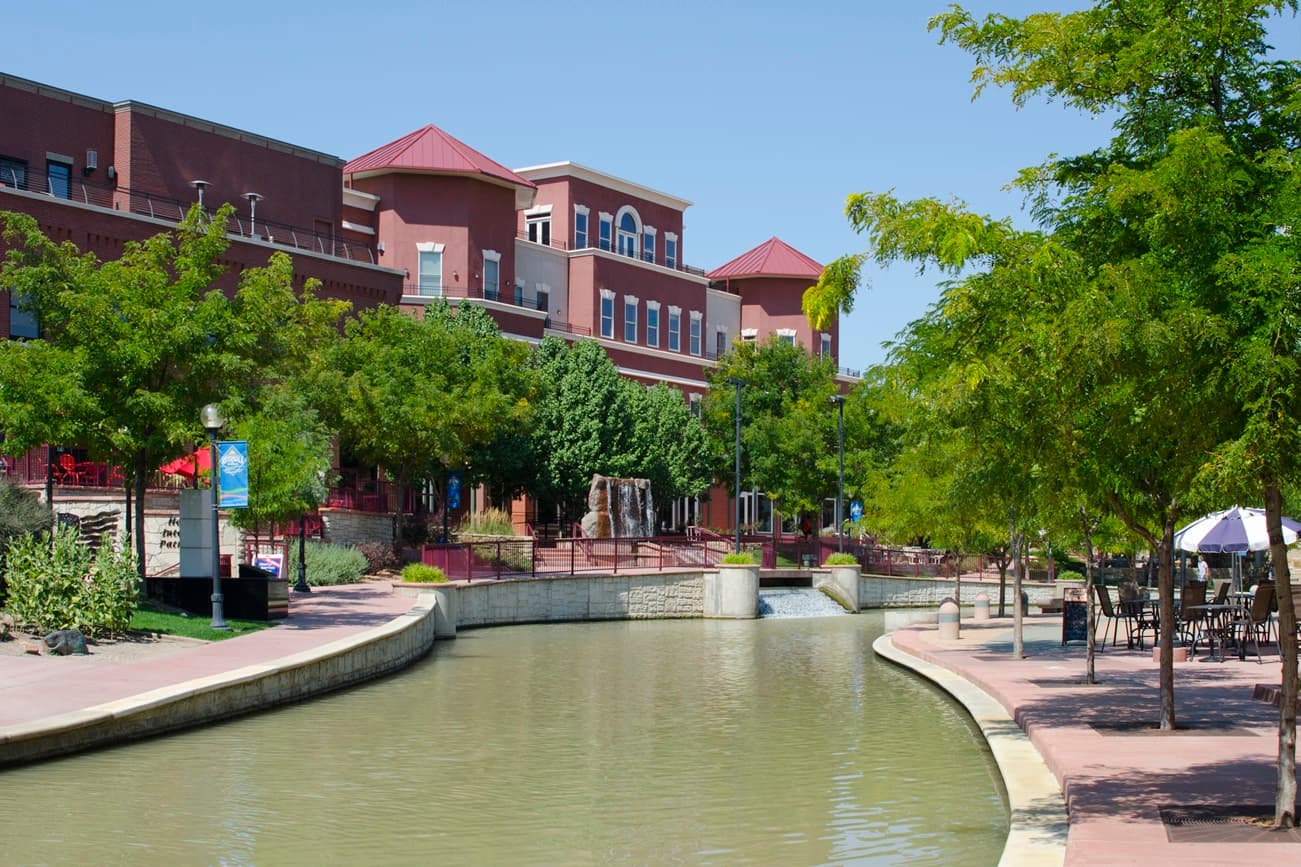For the first three months after the 2018 Camp Fire destroyed Linda Reynolds’ 1948 Craftsman home in Paradise, Calif., she had vivid, terrifying nightmares.

“I’d picture myself burning up inside my house,” recalled Reynolds, whose Harley Davidson motorcycle also was reduced to ashes, melted plastic and steel. Fortunately, her pet dog survived.
“Sometimes, to be honest, I just wanted to die,” she said. “It was big time PTSD.”
But Reynolds, who is 71, hung in there after the inferno, which destroyed 14,000 homes, killed 85 people and devastated her community.
Afterwards, she dueled with her insurance company and her mortgage holder. She prevailed, though, and now has a new, fire-resistant cement block home with a small greenhouse on one end and a flower-filled yard that she said is on this year’s Paradise community home tour.

She also received a settlement that helped her rebuild from Pacific Gas & Electric, the California utility that admitted its poorly maintained electrical transmission lines were responsible for the fire. (The Guardian June 16, 2020)
However, her $700 annual insurance rate has ballooned to $3,500, reflecting the cost of living in a fire-prone region. And rates will continue to go up as companies stop writing policies or leave the state.
To avoid painful rate increases like Reynolds’, upfront insurance prices in high-risk areas need to reflect the full cost of owning a home, including the insurance, said Austin Perez, a senior policy advisor for the National Association of REALTORS® (NAR).
“Unfortunately, this is what happens when states cap or control rates to keep insurance affordable in high-risk areas” he said. “Homeowners face a one-two punch: they lose everything to a natural disaster and then discover the real cost of insuring their home in disaster-prone areas.”
In California, the Tokio Marine America Insurance Co. and Trans Pacific Insurance Co. recently submitted filings to the state’s Department of Insurance stating they will not renew 12,556 homeowners policies, according to a recent Los Angeles Times article.
Also not being renewed are 1,624 dwellings’ fire and liability policies typically sold to owners of rental properties, as well as personal umbrella coverage.
Several major insurers, meanwhile, including State Farm General, Farmers and Allstate, have limited their exposure in the Golden State by cutting back on the number of new policies they issue or tightening underwriting standards. State Farm, for example, announced in March it would not renew 72,000 policies.
“It’s like rent control, but for insurance,” Perez said. “States can hold down rates and make insurance affordable in risky areas. However, if insurance companies can’t cover their costs, the insurance won’t be available.”
State Farm, the Golden State’s largest home insurer, estimates its total claims from this past January’s Pacific Palisades and Altadena fires will approach $8 billion, though it said payments from reinsurers to State Farm will pare its net costs to a little over $600 million.
Those losses have prompted the company to seek a 22 percent emergency rate hike for its homeowners policies even as its claims-handling practices are being scrutinized, according to the LA Times. State Insurance Commissioner Ricardo Lara initially turned down the request but is considering additional financial information submitted by the insurer.
His reform plan to make homeowners insurance more available gives insurers financial and policy concessions in exchange for a pledge to write more policies in risky neighborhoods.
It is imperative for REALTORS® to advise clients to talk to an insurance agent and ask for the full-risk rate.
Perez said it is imperative for REALTORS® to advise clients to talk to an insurance agent and ask for the full-risk rate before buying a home in a high-disaster-risk area.
REALTORS® can also add value by connecting customers with disaster risk experts like the local fire department or pointing to credible third-party sources like FirstStreet.org, which connects financial risk and changes in the climate. NAR has also provided consumer guides for home insurance and wildfire coverage.
That could make some homes in higher risk areas unaffordable for some buyers, explained Perez. “This may mean guiding clients away from higher risk neighborhoods where the cost of homes, including insurance, exceeds their budget,” he explained.
“It’s not about making insurance cheaper. It’s about ensuring clients have the information they need, including the disaster risks, to make fully informed decisions.”
Reynolds’ tale ended well, but she said people she knew who were underinsured or had no insurance at all were left impoverished. Some moved away to live with relatives and start over.
Elsewhere around the country, there are similar stories, especially where people dwell in areas prone to fire, flooding, tornadoes and other natural disasters.
In mid-March this year, violent tornadoes tore through parts of Arkansas, Missouri, Georgia, Texas, Louisiana, Mississippi, Alabama and Kansas, killing more than 30 and causing millions in damage.
As for Reynolds, she barely escaped after trying to rescue a friend among the smoke and fire. She said she was trapped on a road leading from town for six hours, but eventually made it out. So did her friend, but others were not so lucky.
“I kept my windows rolled up as I sat there and ran the air conditioning, but there were so many ashes inside my car the next day that the dashboard looked like a dustbin,” she said.
The fire burned for nearly two weeks and it took Reynolds even longer to see what was left of her home, her motorcycle and several outbuildings on her one-acre property.
“There was nothing but those dreadful ashes,” said Reynolds, who moved to Paradise in 1993 and spent her career working as a designer.
“Just one damn metal garbage can survived,” she said, chuckling bitterly. The house she lost was 1,750 square feet. Her new home is somewhat smaller at 1,475 square feet. But it is fire resistant and made of Insulated Concrete Form (ICF) blocks. It was rebuilt in the Craftsman style, which she said she adores.
She credits a program called Project Porchlight for helping her navigate the recovery and rebuilding process. Porchlight is a free effort staffed by HUD-certified housing counselors, designed to assist disaster survivors recover financially by providing counseling and resources.
We help survivors navigate housing repairs, mortgage lender issues, insurance claims or appeals and other related financial challenges.
“We help survivors navigate housing repairs, mortgage lender issues, insurance claims or appeals and other related financial challenges,” said spokesman Thomas Nitzsche. “Before we stepped in to help Linda, she missed a deadline to receive aid from the federal Small Business Administration.”
Reynolds said the Camp Fire left her bewildered. “I was so confused about everything after the fire,” she said. “I didn’t know what I could afford and what the insurance was going to give me. Project Porchlight gave me hope and the confidence that I could continue. I was living on Social Security and not much more.
“Eventually I got every penny I was insured for. Other people I knew got scared, gave up and moved away.”
She said she was reduced to tears by several insurance agents she dealt with, but eventually found one who was helpful. Her advice to others who are recovering from a natural disaster? “For starters, make sure your insurance is adequate,” she said. “And then after fire or earthquake, tornado or whatever, stay on top of things as hard as it may be. I checked in weekly with my insurance company and wouldn’t take no for an answer.”
Geoff Brown, a senior housing counselor at Porchlight, said “for those that have insurance and are making claims due to a disaster, having things go well with their insurance company is the exception.
“The biggest issue after the wildfires in California, Hawaii, and Colorado is that the payout amounts are not enough to cover the rebuild cost. This can be in part to being under insured, but more common with a disaster impacting thousands of properties all at once, there being a limited supply of architects, contractors, etc. in an area.
“So, you have limited supply and high demand, a basic economic recipe for higher costs, which are not factored into the payout equation.”
In addition, he said many survivors use funds from their overall insurance payout to rebuild and then must find other ways to replace furniture and personal items.

Then they often turn to retail credit cards, which are less difficult to obtain. Some cards come with attractive introductory rates, such as 0 percent for 12 months, and then balloon to as high as 30 percent. See information from the Consumer Financial Protection Bureau.
Perez also said insurance rules vary widely from state to state. “Standard home insurance and separate hurricane policies generally don't cover flooding, but most policyholders don't read the fine print and find this out the hard way.”
After a disaster, some people are not able to afford the increased premiums or are having their insurance cancelled outright.
Another key factor is that after a disaster, some people are not able to afford the increased premiums or have difficulty finding insurance in the private market.
According to a study by Harvard University's Joint Center for Housing Studies, 12 percent of homeowners do not have homeowners insurance.
At the same time, the share of homeowners without a mortgage, which has an insurance requirement, remains above 40 percent. Many people also lack insurance for their home's contents.
As a result, more than two-thirds of states have created Fair Access to Insurance Requirements (FAIR) plans to function as insurers of last resort, said the report, which was authored by Steve Koller.
The total amount of asset value insured by state FAIR plans has eclipsed one trillion dollars, and the number of residential policies in the two largest state programs (Florida and California) has more than doubled since 2018, the review said.
A recent report for the National Conference of State Legislatures (NCSL) said states around the country are struggling with the financial strain caused by the growing frequency and intensity of natural disasters, which tax public resources and challenge the insurance sector’s ability to manage escalating risks.
“Legal and regulatory hurdles further increase expenses for insurers, highlighting the need for effective state regulation of property insurance rates,” said the report, which was authored by Tom Klein.
Though many states maintain competitive markets, regulations such as rate suppression have been linked to issues with insurance availability and market instability, leading some states to consider reforms, he wrote.
“Some argue that rate suppression, catastrophe backstops and other regulatory measures might disrupt market dynamics, particularly in how private reinsurers and alternative capital markets participate in disaster risk management,” he wrote.
In response, insurers and policymakers are advocating for more resilient infrastructure improvements, stricter building codes and expanded risk mitigation initiatives as part of a broader strategy to manage rising disaster risks.
The report also said state policies on land use and insurance design play a crucial role in tackling the growing threat of natural disasters. Approaches that strike a balance between affordability and adequate protection can shape insurance coverage levels and overall market outcomes. As the risks from natural catastrophes evolve, discussions about disaster preparedness, insurance regulation and resilience are becoming increasingly central to both the insurance industry and state policy.
State Responses
In the past year, Florida has enacted several bills aimed at tackling insurance issues related to hurricanes and natural disasters.
The My Safe Florida Condominium Pilot Program (HB 1029) allows licensed inspectors to assess condominiums for hurricane mitigation improvements and identify potential insurance discounts.
Another bill (HB 1503) changes how surcharges are applied by the Citizens Property Insurance Corp., which provides windstorm and general property coverage for homeowners who could not get insurance elsewhere. The bill also adjusts how the corporation manages its accounts and includes quota share primary insurance in some policies.
In Georgia, new legislation (HB 279) provides insurance premium discounts or rate reductions to property owners who construct new buildings or retrofit existing ones to better withstand tornadoes, hurricanes or other windstorms. The bill encourages safer building practices by offering financial incentives for resilience improvements.
Hawaii has recently focused its efforts on wildfire insurance and risk management. One bill (SR 79) directs the insurance commissioner to coordinate the development of a wildfire insurance compact. Another (SR 160) calls for a comprehensive study on wildfire risk and insurance. The study aims to explore market-based approaches to better address wildfire threats across the state.
Similarly, an Oregon measure (S 82; 2023) requires insurers to send detailed notices to homeowners when canceling or not renewing policies, or increasing premiums on policies, due to wildfire risk. The legislation aims to enhance transparency and inform residents about changes in their insurance related to wildfire threats.
Additionally, some states are exploring the role of utility companies in natural disasters, particularly when inadequate maintenance or outdated infrastructure contributes to catastrophic events.
A California bill (AB 1054; 2019) allows property owners to pursue compensation for damage resulting from natural disasters such as wildfires that are triggered by utility equipment, under the legal principle of inverse condemnation.
Balancing protection, affordability and resilience will remain a central challenge for policymakers and the insurance industry alike.
As states continue to adapt policies to the evolving risks posed by natural disasters, the NCSL report said the insurance landscape will likely see further shifts in regulation and market strategies. “Balancing protection, affordability and resilience will remain a central challenge for policymakers and the insurance industry alike.”











